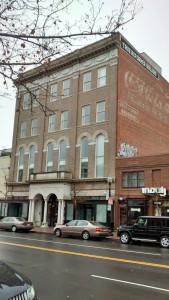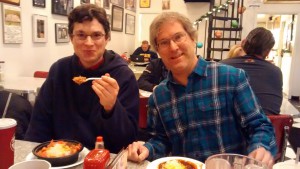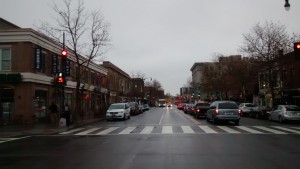Submitted by Rachel Brekhus, Humanities Librarian.
My parents, brother and sister all live in the Maryland suburbs of Washington DC, so when my husband and I visit there for the holidays, there are almost always at least two short trips away from my parents’ park-nestled street in Silver Spring, one to a museum and one to a beach or wildlife site on the Chesapeake Bay. This year's DC museum excursion was to the African American Civil War Memorial and Museum , followed by lunch at Ben’s Chili Bowl in the U Street Corridor, a longtime center of African-American cultural life in the nation’s capital.
To be clear, this area is not “the ghetto” – while areas of concentrated (and racially segregated) poverty certainly exist in DC, and while even this area saw much trouble in the 1960’s and 70’s, the U Street area is a middle-class neighborhood today. I wholeheartedly recommend a visit to the museum, especially for Civil War buffs and anyone who likes to deepen their understanding of U.S. history. The visitor’s experience there is similar to the Negro Leagues Museum in Kansas City: the visitor is presented with snaking walls covered with information-rich objects and documents from the Civil War era and the decades immediately preceding and following it. Several areas contain videos running on continuous loop, for visitors who prefer hearing to reading. There is a stage for live presentations, though we did not catch one while we were there. The most important takeaway from the museum was just how involved African Americans were in the Civil War, as soldiers and as spies – and how effective they were in these roles, as witnessed by those charged with leading and training them. I’m bad with names, so I don’t recall which Union commander it was who remarked that the Black soldiers he trained learned to handle weapons more quickly and readily than the recruits “from Harvard and Yale,” but someone did. Also, I learned about Lincoln’s Loyal League of spies and military recruiters, often run by members of African American Masonic Lodges, which had also been the topic of this museum’s curator Hari Jones’ talk here in Columbia last October.
Ben’s Chili Parlor on Christmas Eve was a hectic, three-room deep family-style restaurant with Christmas music piping all through it and every seat filled by a racially and age-diverse clientele. Its walls were covered with photos, often autographed, of famous African Americans who ate there, from Ella Fitzgerald to President Obama. Its bar stools and booths are original to 1958, when it opened, as is the secret chili recipe. The fare at Ben’s Chili Bowl remains simple – hot dogs, chili, soft drinks and milkshakes – but they do serve vegan chili for those who prefer it. Go there, too, if you’re in the area and want to see the place that has been a neighborhood pillar, surviving changes, from riots to drug wars to revitalization. You can even arrange to have chili mailed to you!
See below for photos of U Street and Ben's Chili Parlor.




